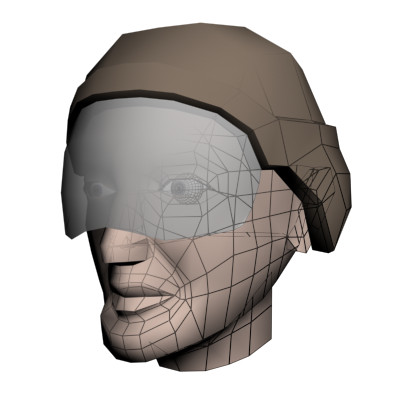This tutorial explains how to model a generic male head using box-modeling techniques combined with edge-modeling tips. Although it should be acknowledged that there are a handful of ways to model a head, the process detailed here tackles core concepts applicable to any method, such as basic divisions, correct edge flow, and polycount optimization.
Even though this tutorial covers the entire head, you might decide to cover only parts of the face based on your needs. For example, if your character wears a hat and doesn't take it off, there is no need to model a full skull. In this case, parts of the head model will be used as a starting point to build the helmet.

What is Considered Low-Poly and Optimizing Where it Matters
As technology leaps exponentially forwards and rendering engines display more and more polygons in real time, what was once called low-poly may not quite be so today. Conservatively speaking, a low-polygon character ranges between 500 and 2,500 faces, depending on the platform the game is aimed for, the game engine used, the number of characters onscreen simultaneously, the level of detail, etc. For example, characters featured in a fighting game require more details than a swarm of army grunts charging a castle in a strategy game. Oftentimes in the game industry, strict polygon budgets are established at the beginning of a project; going over the limit could lead to complications down the line, such as memory-allocation problems.
New techniques like normal mapping are designed to go hand-in-hand with low-polygon models. By combining them, you can have incredible-looking models with a tenth of the expected number of faces.
In this tutorial, you will learn how to:
Skill level: Beginner
Time to complete: 45 minutes
All the files necessary for this tutorial are provided on the program disc in the \tutorials\low_polygon_modeling directory. Before starting the tutorials, copy the \tutorials from the disc to your local program installation.